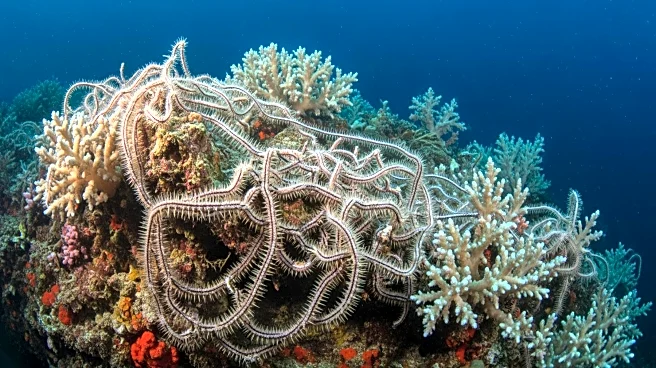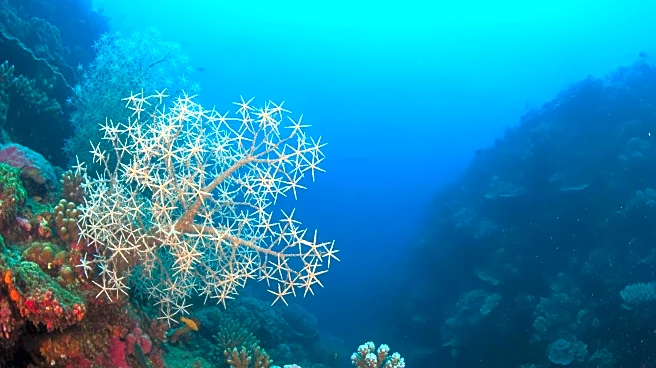What's Happening?
Brittle stars, cousins of sea stars, are vital components of deep-sea ecosystems, acting as ecosystem engineers. They live in diverse habitats, including seamounts and abyssal plains, and play a crucial
role in nutrient recycling and sediment stirring. More than half of known brittle star species inhabit the deep sea, where they serve as prey for various marine animals. Their ability to make their own light helps divert predators, showcasing their adaptation to deep-sea conditions.
Why It's Important?
Brittle stars are essential for maintaining the ecological balance of deep-sea habitats. As technology advances, the threat of deep-sea mining increases, potentially disrupting these fragile ecosystems. Understanding the role of brittle stars in nutrient cycling and biodiversity can inform conservation efforts and help protect marine life from human activities. The recent High Seas Treaty offers hope for safeguarding these environments by establishing ground rules for environmental impact assessments.
What's Next?
Continued research on brittle stars and their ecological roles will enhance our understanding of deep-sea biodiversity. Efforts to protect these ecosystems from mining and other threats will require collaboration among nations and adherence to environmental regulations. The High Seas Treaty provides a framework for conducting impact assessments, supporting conservation strategies.
Beyond the Headlines
The study highlights the interconnectedness of deep-sea ecosystems and the importance of protecting them from human activities. As access to deep-sea resources increases, understanding the ecological roles of species like brittle stars becomes crucial for sustainable management.











